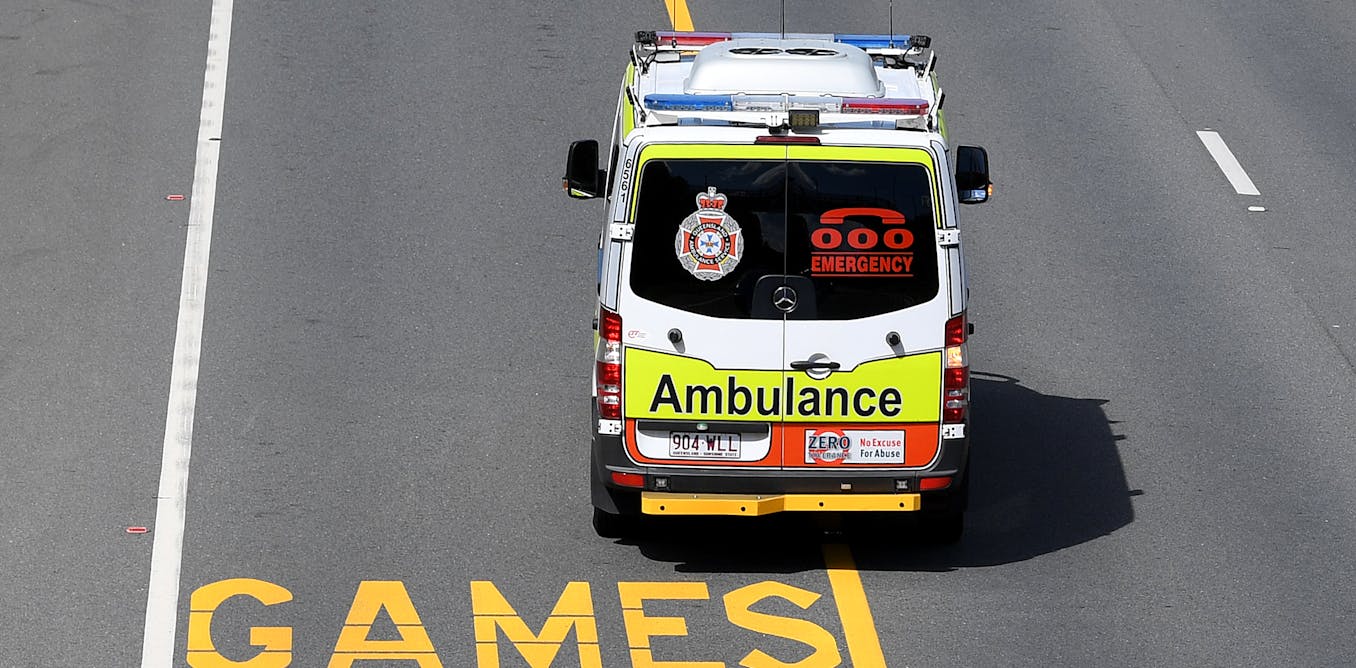“While the biomedical response to HIV has surpassed all my expectations, sociocultural barriers have not only remained but — in some instances — even worsened. Stigma and discrimination are today as much a reality as they were in 1981. People living with HIV (PLHIV) continue to be denied services and equal access to opportunities based on their serological status.” Erika Castellanos, Global Action for Trans-Equality (GATE)[1]
More than 40 years since the first HIV cases were detected, stigma and discrimination remain persistent challenges to HIV testing, prevention and treatment, perpetuating inequalities and exacerbating the vulnerabilities that fuel the HIV epidemic. Between 2020 and 2030, an estimated 440,000 people are projected to lose their lives due to AIDS as a direct consequence of HIV-related stigma [2], with key populations — gay, bisexual, and other men that have sex with men (MSM), sex workers, transgender individuals and people who inject drugs — being disproportionately affected by stigmatizing behaviors and at higher risk of HIV transmission.[3]
Between 2020 and 2030, an estimated 440,000 people are projected to lose their lives due to AIDS as a direct consequence of HIV-related stigma
Stigma: a multilayer problem
HIV-related stigma and discrimination significantly impacts the health and well-being of people living with HIV or at risk of HIV[4]. Stigma operates in multiple layers, each reinforcing barriers to care, prevention and support. This includes ‘self stigma’, an internalized sense of self-blame, worry, guilt, and need for secrecy contributing to poor mental health and social isolation[5]; ‘health stigma’, arising from health care professionals; and ‘structural stigma’ manifesting through discriminatory laws and institutions. Addressing these diverse layers of stigma is crucial to fostering a more inclusive and equitable response to HIV.
Self stigma
Regardless of their socioeconomic background, 61 percent of individuals have experienced self stigma occasionally, and only 21 percent in Europe openly share their HIV status [6]. The fear associated with self stigma can hinder HIV testing and adherence to treatment or PrEP through fear of being seen at an HIV clinic or being observed taking medication[7]. Yet, discreet prevention methods can offer a solution and improve adherence[8]. This is why communities have advocated for the development of multimethod prevention approaches[9]. Overcoming the fear of HIV disclosure holds the potential to reduce unprotected sex, improve mental health, and enhance engagement in care and treatment[10].
Stigma in health care
Despite advancements in HIV-related innovation, barriers such as stigma and discrimination continue to hinder access to them. This challenge is underscored by the estimated one in eight people living with HIV being denied essential health services due to stigma and discrimination[11].
Stigma in health care practices often discourages people from seeking information on and access to HIV prevention and treatment, fearing judgement or discrimination. In fact, 26 percent of individuals reported concerns about differential treatment by health care staff and 16 percent avoided health care services due to these concerns[12].
Therefore, stigma diminished the likelihood of HIV testing, use of condoms, open communication about status, safe needle practices, and access to prevention options such as pre-exposure prophylaxis (PrEP) or seek treatment and care — impacting therapy adherence and health outcomes.
Addressing these barriers necessitates community-based initiatives, such as ‘checkpoints’, providing a secure space for people living with HIV or those at risk to receive HIV counseling and testing in a nonjudgmental environment. These initiatives also facilitate linkage to health care services in case of reactive test results[13].
Structural stigma
Stigma coming from the institutions remains a challenge, acting as a barrier to treatment, prevention and timely testing people living with HIV or at risk[14]. In certain European countries, legislation establishes an unsupportive legal environment[15], where discriminatory laws, such as the criminalization of drug use, sex work and gay, bisexual and other MSM, contribute to hinder access to HIV prevention, treatment and care[16].
To address these challenges, it is essential to engage with the HIV community, especially key populations, in policy formulation and implementation. This approach eliminates access barriers, tailors care to individual and key population preferences, and advocates for policies to effectively counteract stigma within these communities. In line with this, the Spanish government launched in 2018 the Social Pact for the Non-Discrimination and Equal Treatment associated with HIV. To this end, all spheres of life, both public and private, are addressed through the promotion of policies, strategies and lines of action.
Role of communities: Nothing about us without us
Collaboration among diverse stakeholders, including civil society, policymakers and private industry is key in the fight against HIV. However, it is important to remember that the HIV response must be led by communities, that is why this year’s World AIDS Day motto is ‘Let Communities Lead’. Leading effectively means securing funding and cutting through policy obstacles.
The private sector must also contribute to the fight against stigma. ViiV’s Positive Action programs[17] and the Tackle HIV campaign[18] have been tackling HIV stigma for over 20 years through: working with the communities most vulnerable to HIV with efforts spanning innovations in HIV care services; initiatives aimed at preventing HIV; building capacity in grassroots communities; and addressing HIV stigma and discrimination.
Community leadership can help Europe to achieve the UNAIDS 10-10-10 targets for the removal of societal and legal barriers to accessing services
Call to action: Do not target communities, let them lead
Effective engagement of people living with HIV, particularly key populations, in policy formulation and implementation is paramount for dismantling barriers to access, reducing disparities in prevention, diagnosis, and treatment services, and developing policies that address the real-world challenges. This approach enables tailored services based on individual and key population preferences, contributing to more impactful policies. Community leadership can help Europe to achieve the UNAIDS 10-10-10 targets for the removal of societal and legal barriers to accessing services, by dismantling societal and legal barriers, addressing stigma and discrimination, identifying harmful criminalization policies, and developing strategies against sexual and gender-based violence[19].
To effectively address the multifaceted challenges posed by HIV, we must align EU efforts with these community-led principles. Empowering communities, securing the necessary funding, and ensuring their meaningful participation must be central to all European policies. In particular, and something that ViiV has called for already, is the renewal of HIV Action plan, which expired in 2016. This approach is instrumental in achieving the 2030 HIV elimination goals in Europe and beyond.
References:
[1] 2022. Unfinished Business: A unified voice driving innovation in HIV. manifesto-policy-doc.pdf (viivhealthcare.com)
[2] prevailing-against-pandemics_en.pdf (unaids.org)
[3] McCarten-Gibbs, M and Allinder S (2019). The evolution and future of HIV Prevention Technology. An HIV Policy Premier. csis-website-prod.s3.amazonaws.com/s3fs-public/publication/191112_HIVPreventionTech_WEB.pdf
[4] UNAIDS. HIV and stigma and discrimination. HIV and stigma and discrimination — Human rights fact sheet series 2021 (unaids.org)
[5] ECDC (2023). Stigma: Survey of people living with HIV. Stigma: survey of people living with HIV – Monitoring implementation of the Dublin Declaration on partnership to fight HIV/AIDS in Europe and Central Asia: 2022 progress report (europa.eu)
[6] Recognising the impact of HIV self-stigma | ViiV Healthcare
[7] Audet CM et al (2013) Relationship between HIV stigma and self-isolation among people living with HIV in Tennessee.
[8] McCarten-Gibbs M et al (2019) The evolution and future of HIV prevention technology 191112_HIVPreventionTech_WEB.pdf (csis-website-prod.s3.aCnaCanmazonaws.com)
[9] Community manifesto for HIV Long-Acting Injectable PrEP in Europe. Community Manifesto for HIV Long-Acting Injectable PrEP in Europe | EATG
[10] Evangeli M et al (2017) HIV Disclosure Anxiety: A systematic review and theoretical synthesis HIV Disclosure Anxiety: A Systematic Review and Theoretical Synthesis – PMC (nih.gov)
[11] 2016. United Nations News: 1 in 8 people living with HIV denied health care: UN | | UN News
[12] ECDC (2023). Stigma: Survey of people living with HIV Stigma: survey of people living with HIV – Monitoring implementation of the Dublin Declaration on partnership to fight HIV/AIDS in Europe and Central Asia: 2022 progress report (europa.eu)
[13] Krabbenborg. N (2021) Community-based HIV testing in the Netherlands: experiences of lay providers and end users at a rapid HIV test checkpoint. Community-based HIV testing in The Netherlands: experiences of lay providers and end users at a rapid HIV test checkpoint | AIDS Research and Therapy | Full Text (biomedcentral.com)
[14] 2022. Unfinished Business: A unified voice driving innovation in HIV. manifesto-policy-doc.pdf (viivhealthcare.com)
[14] prevailing-against-pandemics_en.pdf (unaids.org)
[15] HIV Justice Network – Romania | HIV Justice Network
[16] HIV Justice World Wide (2022). Advancing HIV Justice AHJ4_EN.pdf (hivjustice.net)
[17] Positive Action to Support HIV Community | ViiV Healthcare
[18] Tackle HIV – Tackling the misunderstanding & stigma of HIV
[19] UNAIDS. Global AIDS Strategy 2021-2026. End inequalities. End AIDS – Global AIDS Strategy 2021-2026 — End Inequalities. End AIDS. (unaids.org)




